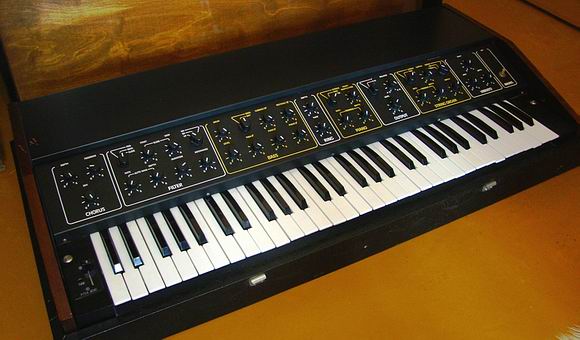FuturTone-#DigMyRig Top Ten

#DigMyRig Photo
Gear List
The goal of my rig has always been – it must be compact and convenient for electronic music live playing supporting flexible multichannel midi routing and multitimbrality. My first MIDIsystem was centered around my own DIY MidiBox hardware sequencer project kindly shared by developer Thorsten Klose.
The MIDI Association Artist Interview
•* Tell us about yourself briefly.
Working as designer, I’m also passionate about electronic live music… as much live as possible 🙂
* What was your first encounter with MIDI?
Early 90-ties with Yamaha QY-20 sequencer connected to midi controller keyboard (RMIF TI-5 synthesizer) – that was my first MIDI setup
* How do you use MIDI today?
Mostly to control sound engines from controllers while playing/jamming live, programming drum and rhythm tracks and occasionally to capture performances and musical ideas
* How has MIDI allowed you to do what you do?
MIDI means everything to me while creating and playing music live, without MIDI I would probably still be stuck at prepared piano level and occasional synth jamming
* Anything else you’d like to add?
My full story with embedded links follows below –
My connection to music is rather based on texture rich multi-timbral orchestral classical arrangements than guitar rock, so aside from occasional prepared piano experiments, my musical journey started in late 80-ties, when I studied at Riga Technical University and got hands on my first synthesizer – RMIF OPUS (http://www.ruskeys.net/eng/base/opus.php ) – bi-timbral polyphonic analogue monster – functionality hardly available these days. It was lot of fun layering sounds on analogue tape, but unfortunately the result after numerous overdubbing through analogue delays and reverb was very noisy and, of course, there was no MIDI, no synchronization, no pre-sets, what made quite hard for me to reproduce anything.
In early 90-ties I discovered MIDI with Yamaha QY-20 sequencer. MIDI sequencing and multi-timbrality finally allowed to create clear sounding music and soundscapes, but then for long time I was not happy with the sound generated by digital sound engines. Later, switching to computer with Yamaha SW PCI SW1000XG made sound design and production more pleasant (like this production below called elektrogans-virtual-love), but limited sequencing options upset me again, because at that time only linear sequencing was available on computers, whereas I wanted to play/jam live combining MIDI with dynamic loops and live arpeggiators.
Next MIDI milestone for me was Korg M3 workstation with KARMA engine, what allowed dynamic live MIDI sequences and arpeggios, but was quite hard to program and required computer software to do so effectively. At the same time I also found amazing MidiBox project ( http://www.ucapps.de ) developed by Thorsten Klose and kindly offered to everyone as DIY project. I learned that MidiBox Sequencer perfectly fits into my MIDI usage concept and took a challenge and successfully built one myself also utilizing my engineering and design background and again had lot of fun playing live MIDI at my home studio. This soundtrack is an example of such live performance without overdubbing.
However involvement of MidiBox sequencer, MIDI controller keyboards, and hardware sound modules raised another challenge – how do you connect and synchronize them together? So I had to build my first 4U rack-mount MIDI rig which I built around MidiTemp PMM88 matrix and Doepfer MMR4/4 MIDI processor allowing quite flexible MIDI routing and processing so that with simple touch of a button I could easily route MIDI signals from any of my controllers to any of sound engines, through or bypassing MidiBox sequencer at any time while keeping everything in sync – yet pretty hard to set everything up.
So far great for studio, but not so great for live rehearsals, when I joined to Charisma (https://charismalv.bandcamp.com ) helping them with computers and synth sounds. Carrying that all equipment around (music is my passion and not job) on regular basis still seems rather impossible. The introduction of iConnectMIDI4plus and Squarp Pyramid sequencer allowed me to build new, more mobile self contained 4U rack which is compact enough, weights around only 15 kg, and doesn’t require external connections other than simple audio and USB (MIDI via USB), but I had to sacrifice midi routing flexibility because iConnectMIDI4plus unfortunately doesn’t allows flexible enough reconfiguration on the fly from remote controller, also beautifully programmable arpeggios from MidiBox sequence are not there any more. Thus I still find missing essential full featured connection/link between MIDI controllers and sound generators and sadly I can’t code, so this remains in my vision and layout drafts.
Desire for multi-timbrality combined with lack of computing/storage resources determined my choice in favour of MIDI based work-flow opposed to common audio layering/overdubbing approach. So MIDI means everything to me to create live layered multi-timbral electronic music while at the same time I’m really impressed with emerging MPE. When playing LinnStrument, for example, I frequently feel that there is much less need for arpeggios and preprogrammed sequences, because MPE brings such a sparkling inspiration and breathtaking experience to me. I would definitely say that with MPE MIDI has come to whole new level, making electronic instruments more alive than ever before. I’m looking forward. Future is optimistic!
Additional social links:
Soundclound (some demo tracks) – https://soundcloud.com/gjrix
Youtube (some MPE demo videos) – https://www.youtube.com/channel/UCQUsTHWPkI8Pq9F7H1AgVdQ/videos?shelf_id=0&view=0&sort=dd











